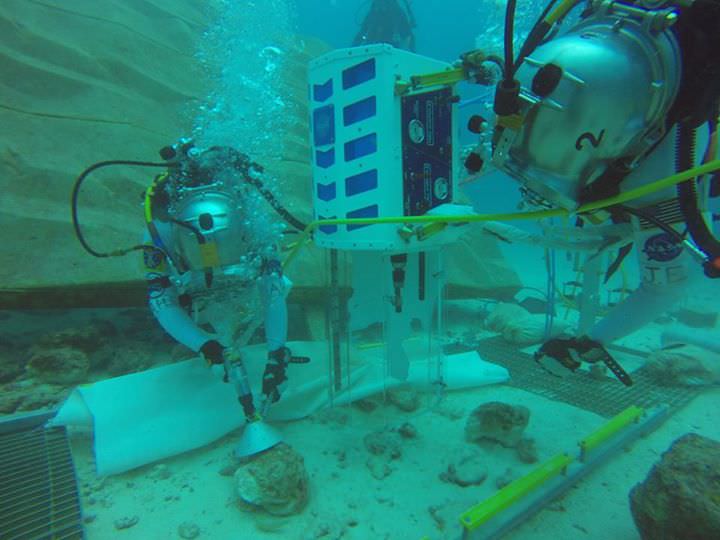

Two unidentified divers participating in a past NASA Extreme Environment Mission Operations (NEEMO) increment. Credit: NEEMO/Facebook
How do we send humans to asteroids or Mars? While the answer is complex, one part of it is to say “a simulation mission at a time.” That’s one of the roles of the NASA Extreme Environment Mission Operations (NEEMO) project, which now is seeing its 18th crew temporarily live in a habitat 62 feet beneath the Atlantic Ocean’s waves.
Astronauts spend time in the small Aquarius habitat and every so often, venture outside — including right now that goes until about 1 p.m. EDT (5 p.m. UTC). Luckily for us virtual aquanauts, there are six possible livestreams to choose from — so have fun figuring out which is the best view! You can catch all the action at this web page.
And if you miss today’s, another one is scheduled for tomorrow around 9:30 a.m. to 12:30 p.m. EDT (1:30 p.m. to 5:30 p.m. UTC).
The NEEMO 18 crew includes Astronaut Akihiko Hoshide of the Japan Aerospace Exploration Agency (JAXA), NASA astronauts Jeanette Epps and Mark Vande Hei, and European Space Agency (ESA) astronaut Thomas Pesquet.
“Today, during EVA tasks, Aki and Jeanette will deploy the boom, set up the core drill, and use it to collect samples from the ocean floor,” the NEEMO Facebook page stated.
Learn more about the mission on the NEEMO website.
The Habitable Worlds Observatory, NASA’s planned successor to the James Webb Space Telescope, will be…
The asteroid belt beckons - it contains enough resources for humans to expand into the…
RCW 38 is a molecular cloud of ionized hydrogen (HII) roughly 5,500 light-years from Earth…
When astronomers detected the first known interstellar object, 'Oumuamua, in 2017, it sparked a host…
NASA continues to progress with the development of the Nancy Grace Roman Space Telescope (RST),…
Our neighbour, the Large Magellanic Cloud (LMC), is rich in gas and dust and hosts…